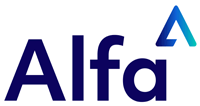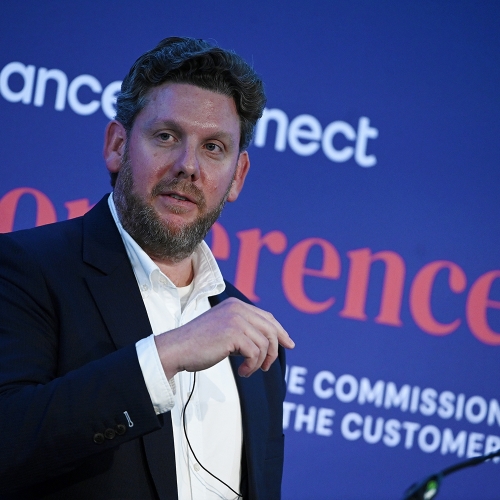Summary
There was a lot of positivity at the Asset Finance Connect December 2022 conference surrounding pay-per-use models in auto and equipment finance industries.
The pay-per-use model is a much-discussed business model that businesses and consumers are considering due to its flexibility and sustainable credentials. The flexible consumption business model ticks lots of boxes – affordable for the customer, a sustainable solution, and the next step forward in future financing options.
Under the pay-per-use model, the ownership and responsibility of the product or service lie with the provider, and the customer pays a fee for usage. Many customers are considering this model because they like the idea of paying only for the services they require and use. In many cases, they also end up receiving better service because the manufacturer has a greater interest in providing a product that lasts.
While pay-per-use is not a new solution (cost per copy has been available in the copier/printer sector for many years), the rise of IoT has made the usage monitoring of the products easier, more accessible and more accurate than ever. This new data flow has made pay-per-use a more viable option for industries that previously didn’t have the tech capabilities to gain value from it.
In order to successfully leverage the benefits of the pay-per-use business model, you need to have access to two critical pillars: technology and data. Moving to a pay-per-use business model may call for changes to business capabilities, operating models, and enabling technology platforms.
There are many advantages and environmental benefits of the pay-per-use financing model with the potential to address the challenge of underutilisation of expensive machinery during the energy crisis. With many machine operators considering a switch to pay-per-use, the potential for greater flexibility and benefits for both manufacturers and operators are significant.
Pay-per-use and ESG
Pay-per-use models are a driver for sustainable consumption and the circular economy, where the asset can be reused, ensuring that the asset is serviced and as new for further lifecycle usage. As part of the energy transition, many businesses want to replace old unsustainable machines with new or used equipment supplied via a cost-effective flexible finance model.
“Pay-per-use models are a driver for sustainable consumption and the circular economy.”
Pay-per-use business models are often linked to increased environmental performance, with consumers becoming more conscious about consumption patterns and companies taking responsibility for product lifecycle issues.
In the Asset Finance Europe 50 Report 2022, Black Winch’s Yann Toutant observes that, “In response to the environmental challenges that we are facing, there are strong solutions that make us thrive while simultaneously not endangering the future generations and existing business models. The As-a-Service model is an important and impactful tool to enable the circular economy. On top of providing economical and financial benefits to the manufacturer/integrator to consolidate its position in its market or even increase it, this model reduces the environmental and social impact of industrial extraction and production of assets when associated with the circular economy principles. And since users are more and more sensitive to environmental concerns and tend to choose the most sustainable solution, the As-a-Service business model is therefore an opportunity to seize. And one last thing, for both the users and the manufacture/integrators, since it is increasingly required to provide key information on the environmental impact of our activities, As-a-Service allows all the players and their asset financing banks to access and monitor key data about environmental concerns, specifically around production and usage of the assets.”
Case study: machine manufacturer
Heidelberg Druckmaschinen AG, the world’s largest manufacturer of sheet-fed printing presses, has offered pay-per-use transactions with its printing equipment since 2017.
Heidelberg initially pioneered the new business model when they discussed changing to an Equipment-as-a-Service model (EaaS), adding the service option to the equipment. Heidelberg customers increasingly wanted support on how they could increase the efficiency of their machines. By adding a package where the price per sheet to be charged includes all the equipment, all consumables required such as printing plates, inks, coatings, washup solutions, a comprehensive range of services geared to availability, and consulting services intended to boost performance, Heidelberg was effectively allowing the customer and the machine to become more productive and efficient.
Heidelberg’s Head of Financial Services, Ralf Steger, addressed the conference session about the benefits of pay-per-use for Heidelberg’s customers, with their new digital business model following the growing pay-per-use trend in mechanical engineering, aiming to move away from growth based solely on selling and installing printing capacity.
At Heidelberg, pay-per-use offers a flexible model where the customer is only charged for the number of sheets they actually print. The model must include a base fee (related to cost of production and consumption of consumables and number of prints) which the customer must pay, but this can be flexible.
The first Heidelberg pay-per-use deal was signed in December 2017 and that first customer has now signed their fourth contract. With their pay-per-use model, Heidelberg experienced an immense learning curve, and today they have signed around 35 subscription contracts. As Ralf Steger noted, “The wise man does” and Heidelberg did!
Heidelberg has been exploring pay-per-use models for several years, looking for partners to share the risk. As an established German manufacturing and leasing company, Heidelberg knows their customers from immense data from over 20 years; they can therefore easily assess the customer risk and equipment residual value risk.
However, out of these 35 signed pay-per-use contracts, only a few have been financed externally, with most held on their books waiting for external finance partners to fund. As Steger notes, Heidelberg will take part of the risk, but they have a cashflow issue to fund the build of the printing press machinery, each costing €3-5 million. They therefore needed a finance partner to manage this cashflow.
Since the conference session, the Heidelberg Group has been able to further develop their pay-per-use model by entering into a strategic partnership with Munich Re Group. With this cross-industry partnership, the two companies are pooling their strengths: Munich Re, as the new contract partner, takes over the financing of the machinery, while Heidelberg is delivering everything which is needed for running a printing business.
Case study: pay-per-use financing
linx4 is an Austrian-based European financing company offering true pay-per-use financing for industrial equipment.
The pay-per-use financing of linx4 is based on an industrial IoT and AI risk management solution, to enable usage-risk sharing. Operating in over 20 European countries, linx4 offers data-driven pay-per-use financing products and tools to revolutionise machine financing operations using data-driven financing products and algorithms.
With a big appetite for pay-per-use financing solutions, linx4 has seen strong demand with business growing fast across different industries and different regions.
linx4’s Managing Director, Peter Oser, also sees the pay-per-use financing model as providing a sustainable solution, with the current energy transition creating a lot of demand from customers who want to replace energy-inefficient machines. If the customers do not have the balance sheet or traditional financing options to buy new machines, they therefore want variable, flexible financing based on a cashflow base.
linx4 enter into vendor partnerships, with 100% of business conducted through machine manufacturers who want to move to an EaaS model. Oser believes that many manufacturers see pay-per-use as presenting a real opportunity to have a more intense customer relationship. Often it is very difficult to get data from a client according to Oser, but if the vendor provides pay-per-use financing through linx4 they can access the data, have long-term service contracts and use the data to build additional business models, all while enhancing and digitalising the customer relationship.
“Pay-per-use is an enabler for vendor partners to develop new business models.”
Utilization
With the pay-per-use model, it can sometimes be difficult to predict individual case utilization according to linx4’s Peter Oser, so transactions can be observed on a portfolio basis to spread the risk of utilisation.
Oser highlights two things that are essential for pay-per-use financing that traditional finance companies are struggling with:
- Technology – The ability to connect the equipment to your lease administration systems once the transactions start, so that you can collect data through a secure data transfer from the machine to your system. Middle and back-office functionality are needed for invoicing and other administrative processes. As Oser points out, this is easier to set up as a new start-up company rather than a company with legacy systems. With the rise of IoT, tracking the usage of products has become easier, more accessible and more accurate than ever.
- Data – To understand the future volatility of the usage of the equipment, you need to look at different sources of data – from vendors/machine manufacturers and individual customers. Based on the data, the risk can be assessed, and the risk margin determined for each individual deal and priced accordingly.
To look at utilization on a portfolio basis, a diversified portfolio with usage risk focusing on more than one industry and region is essential to build an understanding of different utilization.
Oser notes that it is not unusual to look at a new type of risk along with the data behind it and the evidence you have. You can also look at ratings agencies and then pricing can change as you grow more confident.
With this model, a possible partnership approach between pay-per-use financiers (who have the technology/connectivity to the machine and understanding of machine usage risk) and more conservative bank lenders (who have funding and expertise in underwriting credit risk) can create complimentary relationships.
In the current climate, Oser points out that there are many investors in the European private debt market which has grown massively after moving away from banks. As money has moved into these areas, spreads have tightened, and a lot of capital is available. The pay-per-use business model with its risk returns and margins are attractive to the private debt market because pay-per-use financing offers real value to the customers and so they are prepared to pay a premium relative to traditional financing.
Case study: Technology
Basikon offers a cloud native technological solution that manages the full lifecycle of assets financed under pay-per-use transactions. As Renaud Winand, Country Manager for Benelux and Nordics for Basikon points out, digitalisation is needed from the front to back-end of the pay-per-use transaction.
Winand highlights the significance of products that are used part-time and the use of ‘used’ not new assets. Refurbishing and reusing the assets links to a sustainable circular economy. This also provides access to assets for smaller companies who want limited use of equipment, whilst also extending the life of the assets.
Basikon’s Winand believes that there are three fundamental characteristics needed to conduct pay-per-use financing:
1. Help the client to identify what they need, and the relevant pricing.
2. Measure usage of the asset (adding IoT devices to machines) and invoice that use.
3. A flexible digital system that can reconfigure traditional solutions.
Challenges
For pay-per-use to be embraced by the business world, there needs to be a change in the industry’s mindset, according to the session panelists.
Asset Finance Connect’s John Rees believes that, historically, we are a client financing business and there is an asset. But with a pay-per-use full-service model we need to become an asset financing business with multiple clients for the one asset; if you fully understand the asset, you can change the clients.
Basikon’s Winand agrees, you no longer need to understand the risk of the client, but you need to understand the asset, with a shift from risk managers to asset risk managers.
The focus is no longer on interest rates and traditional bank loans either; it is now about the usage of the equipment and assessing the utilization risk. With the correct data and technology, this risk can be managed.
“For pay-per-use to be embraced by the business world, there needs to be a change in the industry’s mindset.”
With big demand for pay-per-use going forward, this rising business model must be seen as a future financing solution for both auto and equipment industries that can offer flexibility and environmental benefits.





